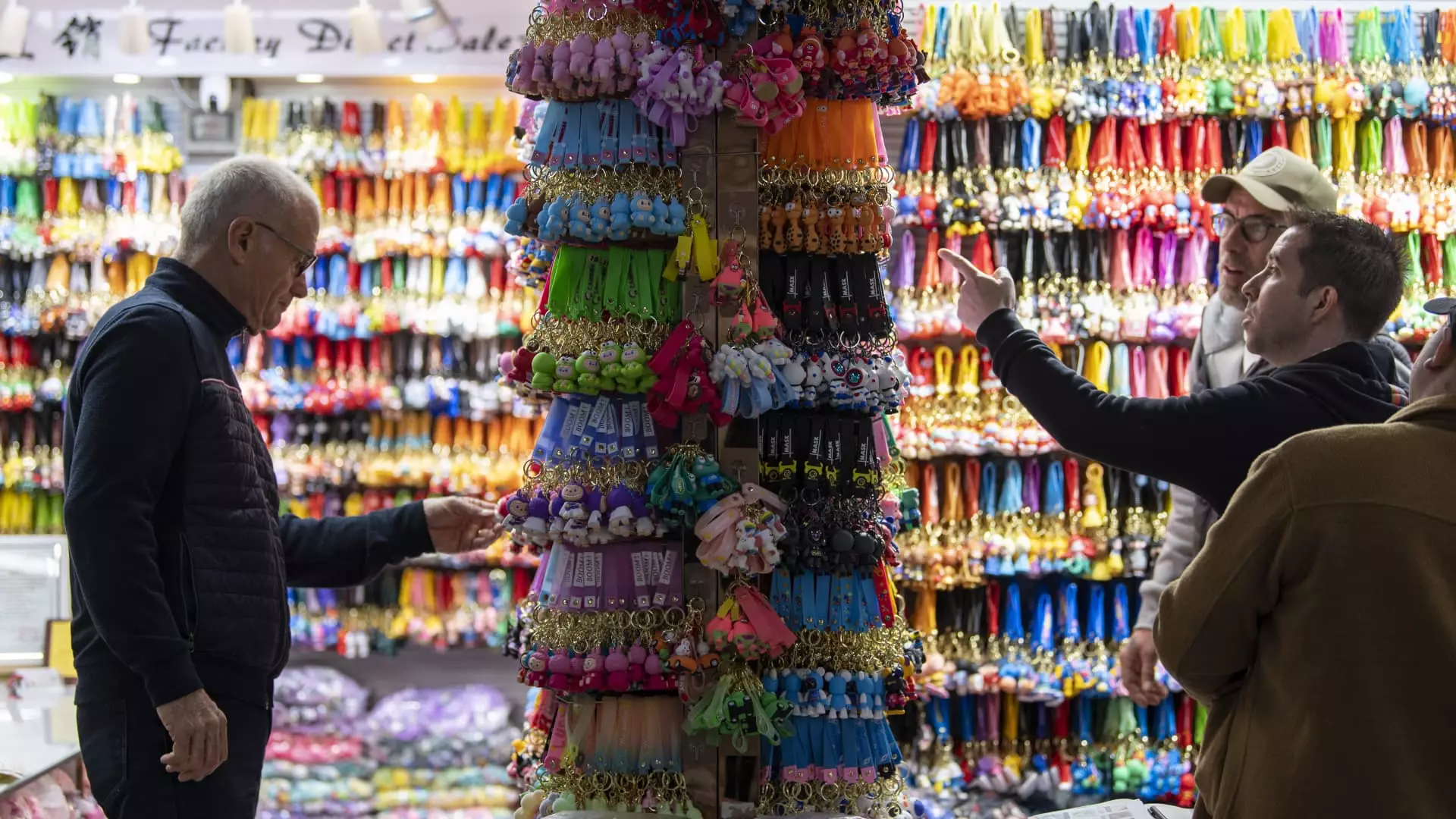As the bustling holiday season approaches each year in the United States, consumers eagerly anticipate the aisles brimming with festive merchandise. This phenomenon, known colloquially as “Christmas creep,” has become an annual ritual where retailers aim to maximize profits by rolling out decorations and gifts well before the turkey has been carved on Thanksgiving. However, the shadow of tariffs looms large over this festive landscape, threatening to crush the holiday spirit under the weight of supply chain predicaments. The tariffs imposed during the Trump administration, which saw Chinese imports subjected to rates as high as 145%, have left retailers in disarray. The specter of these tariffs is a stark reminder of the complexities of global trade that can so easily derail holiday cheer.
The detrimental impacts of these tariffs are evident as retailers grapple with disrupted supply chains and declining inventory levels. Companies that once looked to Chinese manufacturers for their seasonal products are now scrambling to navigate uncertain waters—cancelling orders and delaying production. Such drastic measures not only unsettle the retail market but also send shockwaves through the entire supply chain, from raw material producers to logistics providers. Ironically, the very essence of “buying local” becomes essential when U.S. companies must transition away from relying solely on Chinese goods. However, alternatives are not as readily available, and the intricate nature of these global supply chains may lead to empty shelves at the worst possible time.
The Domino Effect of Production Halts
The crux of the issue lies in the interconnected web of production and logistics, where a simple pause in orders can create a catastrophic domino effect. Cameron Johnson from Tidalwave Solutions aptly illustrated the complexities, noting that even a minor disruption, such as halting spoon production, reverberates across multiple industries—from steel providers to iron ore mines. Each phase of production plays a pivotal role in ensuring shelves are stocked for the holiday rush, but when order cancellations spike, the entire system risks collapsing under the pressures of unpreparedness.
As manufacturers in China face stagnant orders and delayed shipments, businesses in the U.S. must decide how to mitigate risks. The unprecedented decline in cargo ship departures from China reflects the failure of frontloading strategies that previously propped up imports. Companies that were stockpiling merchandise now find themselves stuck with excess inventory in anticipation of consumer demand that may never arrive due to stalled production lines. The stark reality is that businesses are at the mercy of regulatory shifts, tariff negotiations, and global supply chains that are anything but stable.
Shifting Strategies in Response to Uncertainty
Retailers must now develop flexible and adaptive strategies to respond to ongoing tariff threats and the inherent uncertainties of international trade. Some are opting to embrace smaller orders as a method of hedging against ever-changing tariffs, while others have adopted the strategy of partially replenishing inventories. The ongoing adjustments highlight a shift in mindset as companies attempt to outmaneuver the disruptions that threaten to imperil their holiday sales.
Furthermore, there is an underlying tension between the desire for immediate profitability and the long-term sustainability of sourcing strategies. Retailers like Walmart and Target are beginning to adapt their procurement practices by encouraging their suppliers to resume production to prevent the dreaded sight of bare shelves as the holiday season approaches. The urgency to maintain availability contrasts with the financial implications of conducting business amid such unpredictability. This shift reflects a pragmatic approach, where retailers aim not only to appease customers but also to ensure their financial health by striking a delicate balance between stockpiling and potential tariff-induced losses.
Hope Amid Tariff Trials
Interestingly, reports suggest that the possibility of tariff relief has sparked glimmers of hope. Following discussions aimed at mitigating economic impacts, the U.S. government has begun considering exemptions for certain goods. Manufacturers are cautiously optimistic that they may recover some semblance of normalcy if tariffs are reduced, which could ripple through the supply chain with positive impact.
Nevertheless, the question remains: will this optimism be short-lived? The reality is that while tariffs create hurdles for retailers, they also expose vulnerabilities tied to over-reliance on international suppliers. For a nation that prides itself on innovation and resilience, it becomes imperative to re-evaluate and diversify supply chains. In contemplating the future of holiday retail, we must question to what extent tariffs will shape consumer behavior, and whether the struggle against them can ultimately engender a shift towards a more self-sufficient and sustainable economic model.
The Christmas season is, at its heart, a time of joy and celebration, yet the underlying economic forces threaten to inhibit this profound experience. Though many may dismiss the impacts of tariffs as a mere footnote in the larger narrative of holiday festivities, the reality is sobering: businesses and consumers alike must navigate an increasingly complex web of global trade. In that navigation, they may just find themselves redefining what it means to celebrate the season in a world marked by uncertainty.

